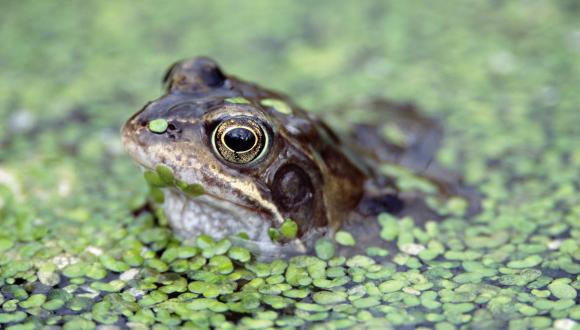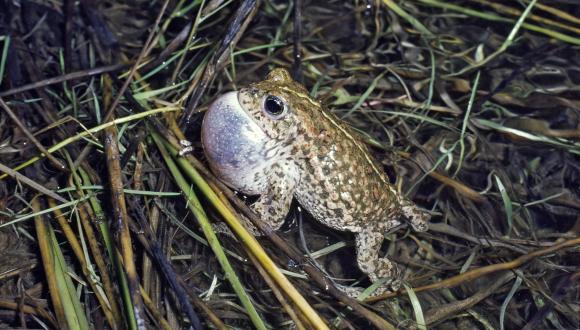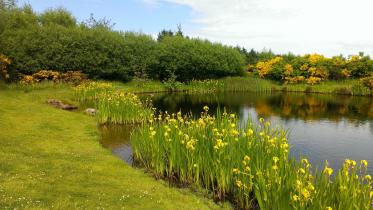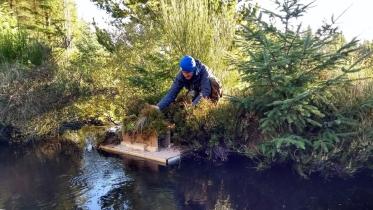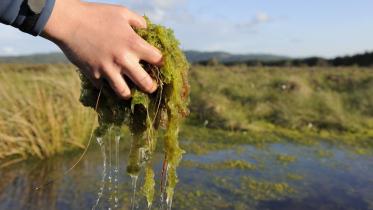Standing advice for planning consultations - Reptiles (Adder, Slow Worm & Common lizard)
This is standing advice to help planning applicants seeking permission for development that could affect reptiles, and to assist planning officers and other regulators in their assessment of these applications. It avoids the need for us to advise on individual planning consultations in relation to reptiles. We will only provide further advice in exceptional circumstances that are not covered by this standing advice.
Consideration of protected species in development management
Scottish Planning Policy requires that the presence (or potential presence) of legally protected species is factored into the planning and design of development proposals, and that any impacts on protected species are fully considered prior to the determination of planning applications.
Where impacts on a protected species cannot be avoided, certain activities may only be undertaken with a licence from NatureScot. It is important that any licensing issues are considered as part of a planning application to avoid any unnecessary delay to a development proceeding. However, note that with respect to reptiles there is no licensing provision for development works that would otherwise result in an offence being committed.
Legal protection for reptiles
There are three terrestrial species of reptile commonly found in Scotland; adder, slow worm and common lizard (also known as viviparous lizard). All are protected by the Wildlife and Countryside Act 1981 (as amended) and by the Nature Conservation Act 2004. Offences relevant to development works include:
- to intentionally or recklessly kill or injure an adder, slow worm or common lizard.
This means that if reptiles could be affected in these ways by a development, and no action is taken to prevent it, an offence may be committed. The advice below will help ensure that impacts on reptiles are minimised and no offences occur.
When a development could affect reptiles
All three species can be found in most parts of Scotland, but are notably absent from Orkney and Shetland. Slow worm is the only species found in the Western Isles. They occur in a range of different habitats, including grassland, woodland/scrub, heaths and dunes, as well as brownfield sites in more urban settings. For an up to date map of the distribution of each species see the National Biodiversity Network Atlas. The NBN Atlas maps indicate the broad pattern of distributions across Scotland but cannot provide detailed information for individual development sites. Local Record Centres may have additional information that can help determine if reptiles are likely to be present.
The main potential impacts from development proposals are the risk of individual reptiles being killed or injured during construction work (eg. site clearance, excavation works, vehicle movements and stockpiling of construction materials) and any resulting loss or damage of suitable reptile habitat.
A reptile survey should be carried out if they could be found within or close to a development site.
Carrying out a reptile survey
Reptile surveys should be done by persons with the appropriate knowledge of reptile ecology and practical experience of reptile survey work. They can be carried out from April to September, though the best months are April, May and September when reptiles are most active above ground. Reptiles hibernate from October to March, when they lie dormant amongst dense vegetation or tree roots, and under logs or rocks.
Surveys of adders and common lizards involve a careful search of the development site for individuals basking in the open. Searches are best carried out in the morning or late afternoon on warm, dry, still days. Slow worms rarely bask and so must be looked for under logs and stones. To make reptiles easier to find (especially slow worms), artificial refuges (such as corrugated iron sheets, carpet tiles or similar), can be put out in advance of the survey, for them to bask on or hide under. Several visits are likely to be required to confirm the presence or absence of reptiles across a development site, depending on the size of areas needing to be surveyed.
The survey information needs to be sufficiently up-to-date when a planning application is submitted. Pre-application reptile surveys normally remain valid for two more survey periods, and should be repeated if the application is going to be delayed beyond the start of a third survey period. Unless it is clearly evident that there has been no substantive change in number, distribution or activity of reptiles since the original survey was undertaken.
Further details regarding planning, conducting and interpreting reptile surveys can be found in Froglife’s Advice Sheet 10 and Survey protocols for the British herpetofauna (Sewell et al. 2013).
Reporting survey results
If a development proposal has needed a reptile survey, a survey report must be submitted as part of the planning application. The report should include:
- names and experience of surveyors;
- details of any information gathered from Local Record Centres or other sources;
- descriptions of habitat surveyed and any limitations to the survey, such as access;
- survey methods, including survey area, date, time and weather conditions;
- a map showing the location of any sightings of reptiles in relation to the development and the extent of suitable habitat likely to be affected by the development;
- an assessment of how the development might affect reptiles.
If reptiles could be affected by the proposal, the report must include a protection plan. The plan should include:
- measures proposed to minimise impacts on reptiles, including annotated maps and/or photographs showing the location of any measures proposed and how they relate to survey information and construction work;
- a summary of any residual impacts once the above measures are taken into account.
Measures to minimise impacts on reptiles
Measures to minimise impacts on reptiles should follow a hierarchy of avoidance, mitigation and compensation:
Avoidance
- Design the development and construction methods to avoid the loss or damage of reptile habitat and to maintain habitat connectivity.
- Time works to avoid the period when reptiles may be hibernating (October-March).
Mitigation
- Use fencing to prevent reptiles moving into areas where they could be killed or injured.
- Alter habitat to displace reptiles from areas where they could be killed or injured (e.g. careful strimming of grassland to a short sward, provided there is a suitable safe area nearby that they can easily move to.
- Catch reptiles and translocate to suitable habitat that won’t be affected by the development. Translocation is a difficult and time consuming operation and should be treated as a last resort. Translocations should be to sites nearby; small numbers of individuals may be added to habitat with existing populations of a species, but if large numbers of individuals are involved they should be released into new, or improved habitat where they won’t be competing with an existing population.
Compensation
- Create new habitat where there is significant loss of existing habitat.
For all development proposals where reptiles are a consideration, pre-construction surveys should be timetabled into project plans. This is to enable checks for any changes in distribution after the original survey, and to ensure the measures proposed to minimise impacts on reptiles remain appropriate. Pre-construction surveys should be completed as close to the start of works as possible, and always within the most recent survey period.
Further information and more detailed advice on mitigation measures can be found on the UK Government website.
Licensing development works affecting reptiles
There are no licensing provisions to allow the killing or injuring of reptiles and so measures must be put in place to minimise the risk of this happening and avoid an offence being committed.
